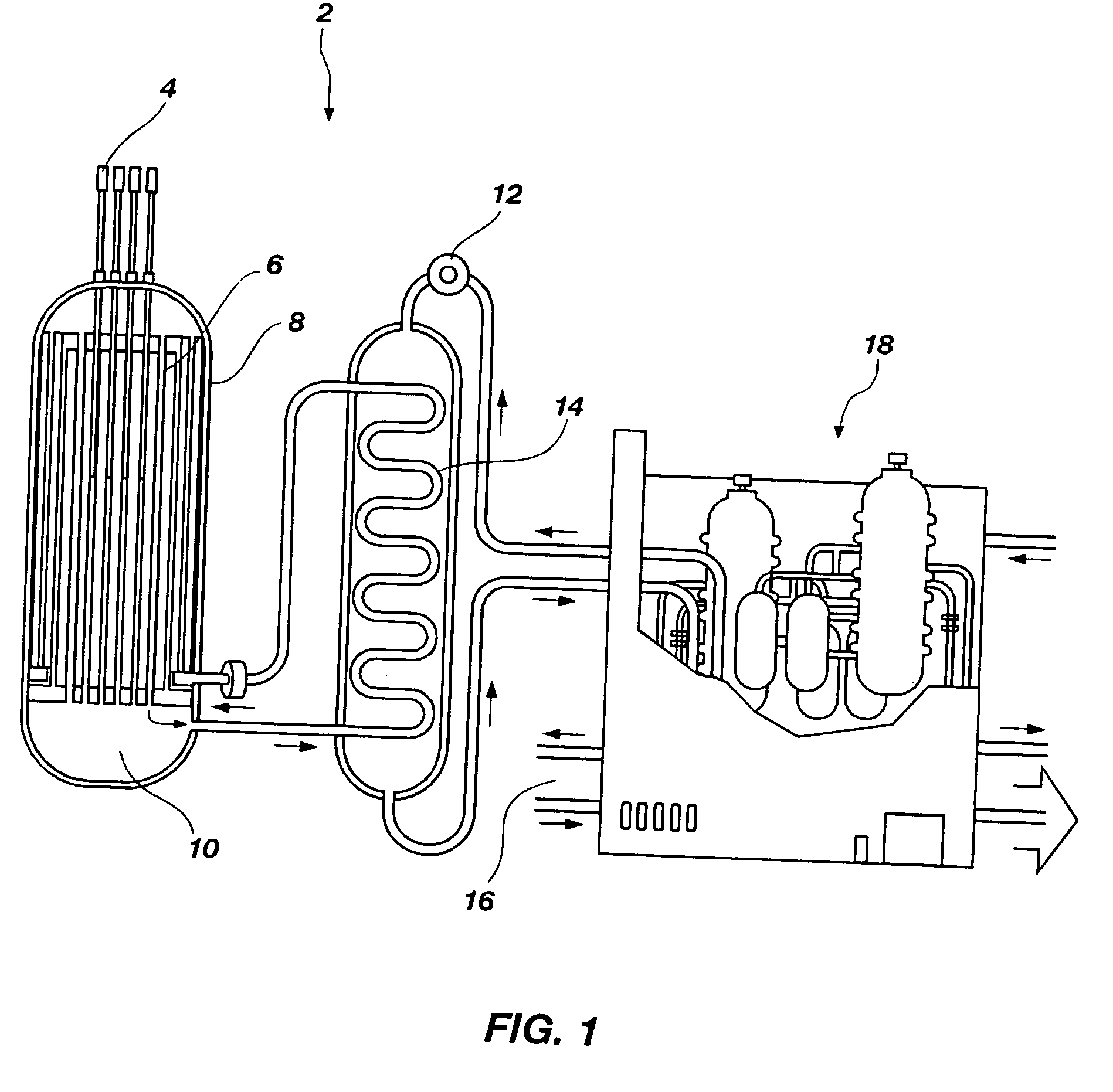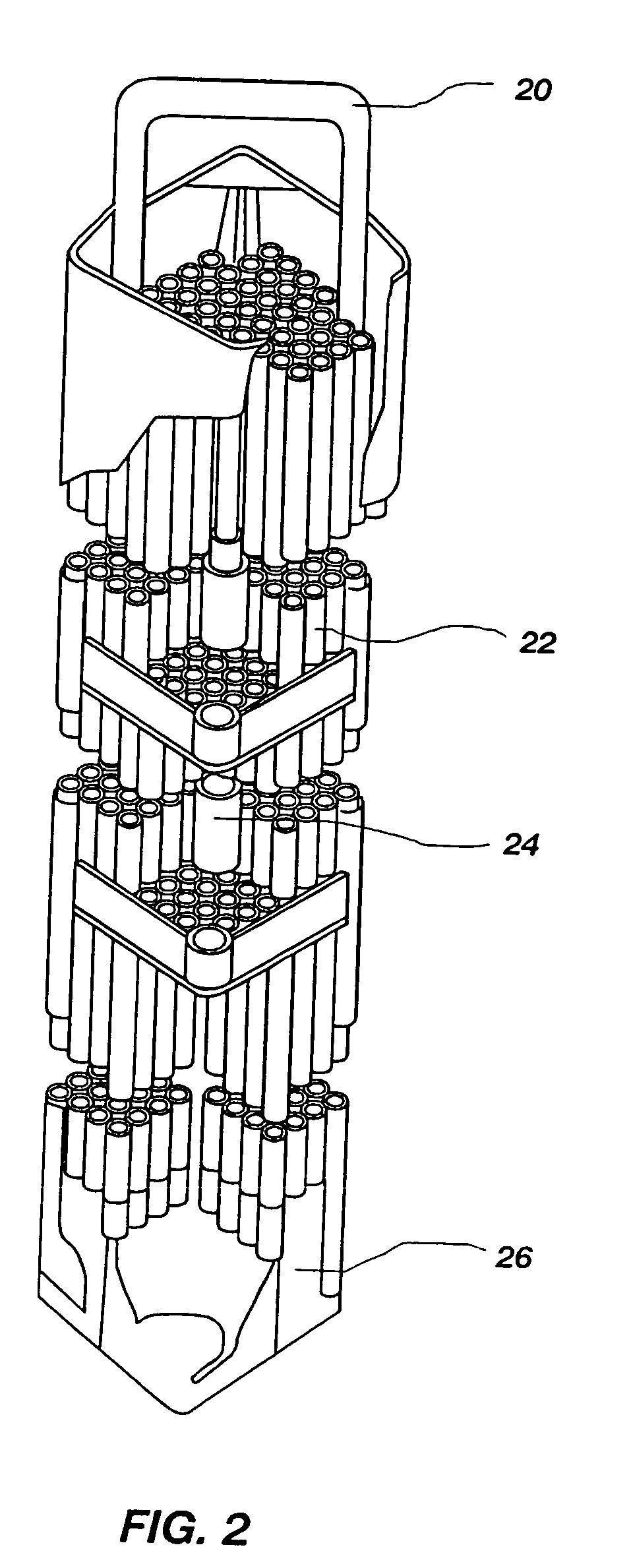Silicon carbide material for nuclear applications, precursor and method for forming same, and structures including the material
- Summary
- Abstract
- Description
- Claims
- Application Information
AI Technical Summary
Benefits of technology
Problems solved by technology
Method used
Image
Examples
example 1
Formation of 11B-Doped SiC Fibers
[0036] Tyranno® Lox M fibers were obtained from Ube Industries, Ltd. and solid 11B2O3 was obtained from EaglePicher, Inc. The Tyranno® Lox M fibers are polymer-derived, Si—Ti—C—O fibers having reduced oxygen content. To deoxygenate the Tyranno® Lox M fibers in a batch operation, 800 g of Tyranno® Lox M fibers were placed onto four Grafoil spool packages and placed in a furnace with 108 g of 11B2O3 powder in several Grafoil boats in flowing argon at approximately 1600° C. for approximately 5 hours. The Tyranno® Lox M fibers and the 11B2O3 powder were then heated at approximately 1650° C. for approximately 1.5 hours to enable doping of the Tyranno® Lox M fibers with boron. The Tyranno® Lox M fibers lost approximately 20% of their weight during the doping operation. The fiber spool was then removed from the furnace.
[0037] In a second, separate operation, the doped fibers described above were densified in a continuous spool-to-spool operation by exposi...
example 2
11B-Doped SiC Fibers Exposed to iBN Treatment
[0039] Approximately 800 g of 11B-SiC fibers from Example 1 were wound onto a Grafoil spool and placed into a furnace. The furnace was heated to approximately 1850° C. for approximately 1.5 hours in a controlled flowing nitrogen gas. During this process, the nitrogen gas diffused into the SiC fiber surface and reacted with the 11B that was present, forming a thin, 11BN-rich, in-situ layer at the near fiber surface. Auger analysis showed that the 11BN-rich, in-situ layer was approximately 200 nm in thickness. The resulting i11BN SiC fibers had a density of 3.14g / cm3, a tensile strength of 2411 MPa and an elastic modulus of 324 GPa.
[0040] Properties of the 11B-SiC fibers described in Example 1 and the i11N SiC fibers described in Example 2 are shown in Table 1. For comparison, the properties of 10B-doped SiC fibers (Sylramic® fibers, commercially available from COI Ceramics, Inc.) are also provided. These properties were determined by con...
PUM
| Property | Measurement | Unit |
|---|---|---|
| Temperature | aaaaa | aaaaa |
| Temperature | aaaaa | aaaaa |
| Temperature | aaaaa | aaaaa |
Abstract
Description
Claims
Application Information
 Login to View More
Login to View More - R&D
- Intellectual Property
- Life Sciences
- Materials
- Tech Scout
- Unparalleled Data Quality
- Higher Quality Content
- 60% Fewer Hallucinations
Browse by: Latest US Patents, China's latest patents, Technical Efficacy Thesaurus, Application Domain, Technology Topic, Popular Technical Reports.
© 2025 PatSnap. All rights reserved.Legal|Privacy policy|Modern Slavery Act Transparency Statement|Sitemap|About US| Contact US: help@patsnap.com



